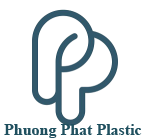
Thông tin sản phẩm
CHEMICAL TANK 20M3
CHEMICAL TANK 20M3 – 20m3 chemical tank pe pp plastic are two commonly mentioned materials: polyethylene (PE) and polypropylene (PP). The differences between them not only affect the technical features but also affect the choice of application, production costs, and safety in the environment of use. This article will delve into some of the main aspects of these types of tanks to provide a more general view for consumers or businesses in need.
FEATURES AND CHARACTERISTICS OF PE AND PP:
Polyethylene (PE):
Polyethylene, especially high-density polyethylene (HDPE), is known for its strong resistance to corrosion. Containers made from PE are well suited for storing corrosive liquids, hazardous chemicals, and food, due to their high compatibility with most chemicals. Some notable properties of PE include:
- Good strength: PE is resistant to pressure and impact, making it an ideal choice for demanding environments.
- High air tightness: With its effective leak-proof ability, PE ensures that no accidents occur with the liquid inside.
- Homogeneity and stability: The unique molecular structure of PE helps it maintain chemical and mechanical stability, ensuring long-term durability.
- Temperature resistance: Polyethylene can operate at temperatures from -40°C to 80°C, expanding its range of applications.
- Food friendliness: PE does not produce any taste or toxicity, making it suitable for storing food and beverages.
Overall, PE is a superior choice for applications requiring high strength, corrosion resistance and chemical compatibility.
Polypropylene (PP):
Polypropylene is equally impressive for its unique material properties. It can withstand higher temperatures than PE, which opens up the possibility of its use in a wider range of applications. Some of the important properties of PP include:
- Heat resistance: PP can maintain stability when exposed to high temperatures, making it ideal for storing hot or heat-inverted chemicals.
- Nhẹ nhàng và dễ chế tạo:Thanks to its light weight, transportation and installation of PP tanks is faster and more economical than PE.
- Chemical resistance: Polypropylene has good corrosion resistance, especially suitable for industrial chemicals and solvents.
- Design Flexibility: PP can be fabricated into a variety of shapes and sizes, meeting diverse application requirements.
- Low manufacturing costs: The manufacturing process of PP is generally less complex than that of PE, which helps reduce costs.
With its outstanding properties, polypropylene becomes the ideal choice for applications requiring heat resistance, chemical resistance and light weight.

APPLICATION OF 20M3 CHEMICAL TANK:
Depending on the specific application, the decision between PE and PP containers can have significant consequences. For example, if you are looking for a container to store drinking water or food, PE is a safer option due to its food-friendliness. Conversely, if you need to store industrial chemicals or cleaning solutions, PP containers are more suitable due to their ability to support high temperatures and resistance to corrosive chemicals.
20M3 CHEMICAL TANK IN FOOD:
When using containers for storing food and beverages, polyethylene has many advantages over polypropylene. PE is not only chemically safe, but also easy to clean and sterilize, ensuring the hygiene of consumer products. Moreover, PE does not produce any odors or contaminants, helping to preserve the flavor and quality of food.
In contrast, polypropylene, although also chemically safe, can absorb odors and flavors from stored products, affecting the quality. Therefore, using PP tanks for food and beverage related purposes is not recommended.
20M3 CHEMICAL TANK IN INDUSTRY:
While PE has advantages for food, PP is a better choice for industrial chemical applications. Polypropylene has better heat and corrosion resistance, which helps protect the tank from corrosive industrial liquids, vapors and solvents.
In addition, PP is also lighter in weight, which reduces transportation and installation costs. This is especially useful when moving the tank frequently or installing it in difficult-to-reach locations.
Therefore, for industrial chemical applications, polypropylene is often preferred over polyethylene.
APPLICATIONS IN MEDICINE AND PHARMACEUTICALS:
In the medical and pharmaceutical fields, both PE and PP have notable advantages. Polyethylene, with its stable and safe chemical properties, makes it an ideal choice for storing pharmaceuticals, injectable solutions, and other medical products.
On the other hand, polypropylene also has advantages when used in medical environments. PP is able to withstand high temperatures, allowing for more severe sterilization methods, ensuring optimal hygiene.
Therefore, in medical and pharmaceutical applications, the choice between PE and PP depends on the specific requirements for hygiene, heat resistance, and sterilization of each application.
20M3 CHEMICAL TANK GREEN ENVIRONMENT FRIENDLY:
Another factor to consider is the environmental impact of both materials. In terms of production and disposal, and the fact that it can be recycled, PE is often considered more environmentally friendly than polypropylene, as the manufacturing process for PP can be more energy intensive and produce higher emissions.
PRODUCTION AND DISPOSAL:
Polyethylene production is generally less energy intensive than polypropylene. This is because the processes involved in making PP, such as high-temperature polymerization, are more energy intensive.
In addition, when it comes to disposal, polyethylene is also more easily recycled and biodegradable than polypropylene. Recycling PP requires more complex processing steps, which increases costs and environmental impact.
RECYCLABLE ABILITY:
Polyethylene, especially HDPE, is considered easier to recycle than polypropylene. PE recycling is faster and simpler, due to its less complex molecular structure.
In contrast, PP recycling is more complex, requires more processing steps and consumes more energy. This increases the cost and reduces the feasibility of recycling polypropylene.
Therefore, from an environmental perspective, polyethylene is often considered a more sustainable choice than polypropylene in many applications.
20M3 CHEMICAL TANK MANUFACTURER IN VIETNAM:
Whether you choose polyethylene or polypropylene containers, each has its own advantages and applications. The decision should be based on your specific needs, industry, and safety, economic, and environmental requirements. By understanding these differences, you can make the best choice for sustainable and safe chemical management.
PHUONG PHAT PLASTIC specializes in processing – manufacturing – repairing PE PP plastic chemical tanks imported from Korea and Germany.
FOR MORE DETAILS, PLEASE CONTACT:
PHUONG PHAT PLATIC
+84 966 355 822
www.giacongnhuapp.com
nhuaphuongphat@gmail.com















